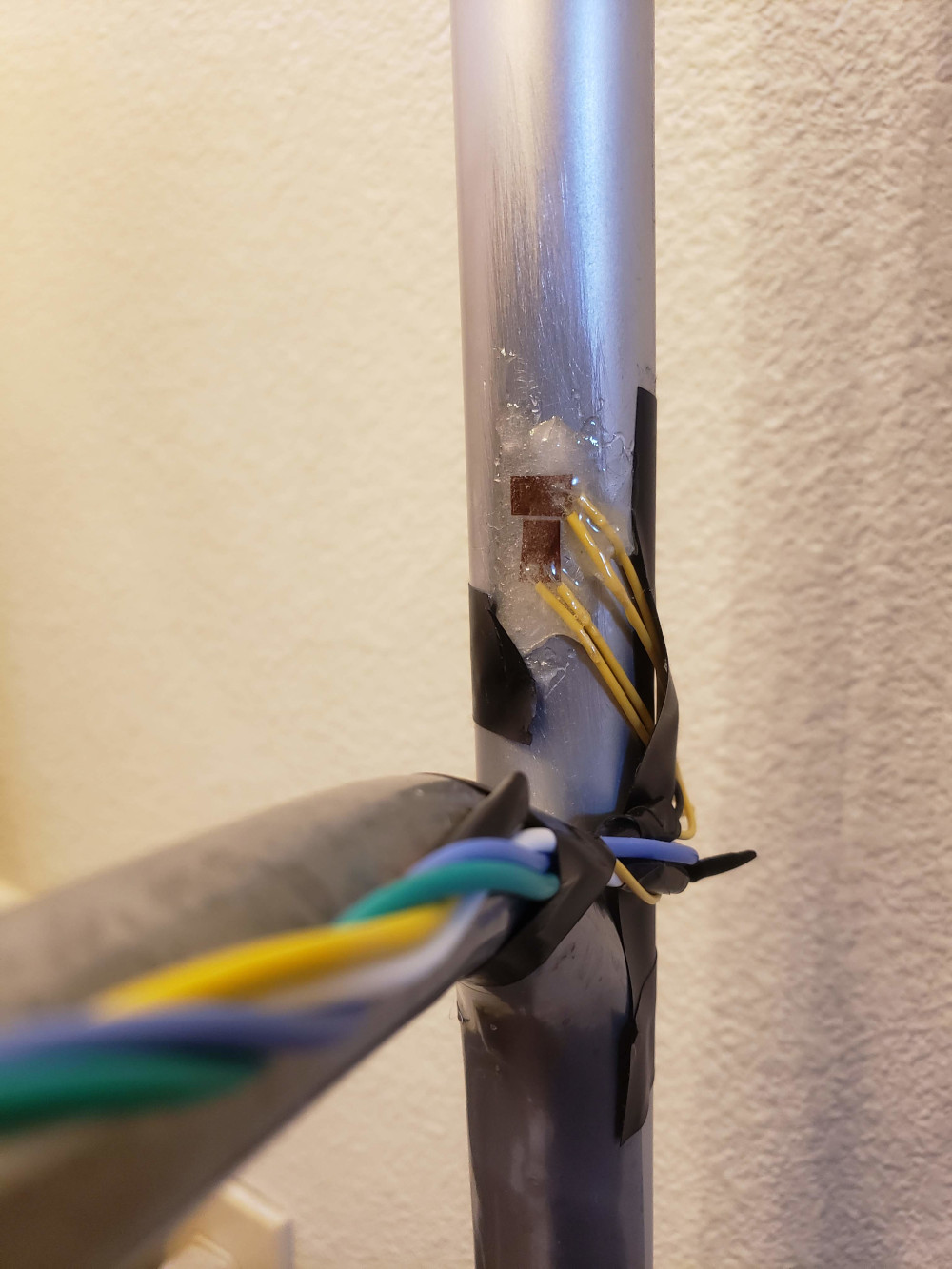Sensor System
Why use sensors on a walker?
- Without constant reinforcement from an experienced caretaker, users are unaware of their current posture, which can result in the development of habitual bad posture.
- A caretaker may be worried that the user will have an isolated fall and cannot contact for help. As a result, caretakers are responsible to constantly check on the user, either physically or use of multiple cameras set around the house to avoid the anxiety of the user having an isolated fall.
Ambler's Solution

Set of strain gauges attached to the leg of our gen 0 prototype.
We have attached strain gauges on each leg that are able to detect the amount of force applied on each leg. With the use of a microcontroller, it can process force readings in near real-time. If one side of the legs is unbalanced, the microcontroller is able to relay the information via a feedback system attached to the walker that would notify the user that they need to correct their current posture on the specific side of the walker.
Furthermore, the microcontroller would have a gyroscope and accelerometer module that is constantly monitoring any falls, while using the walker. This would reduce the anxiety faced as a caretaker, as they would not need to constantly monitor the user since the microcontroller would be monitoring any unusual and abrupt positional changes.
 Our algorithm to detect falls is based on this graph from the study: Highly Portable, Sensor-Based System for Human Fall Monitoring.
Our algorithm to detect falls is based on this graph from the study: Highly Portable, Sensor-Based System for Human Fall Monitoring.Any abrupt movements, like a fall, would have the microcontroller send a notification, via WiFi or Bluetooth, to a caretakers device that the walker user has fallen.